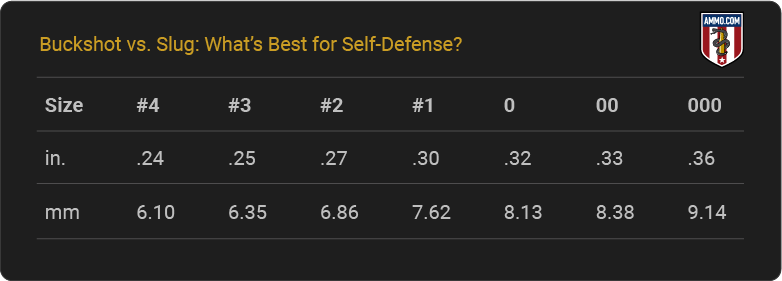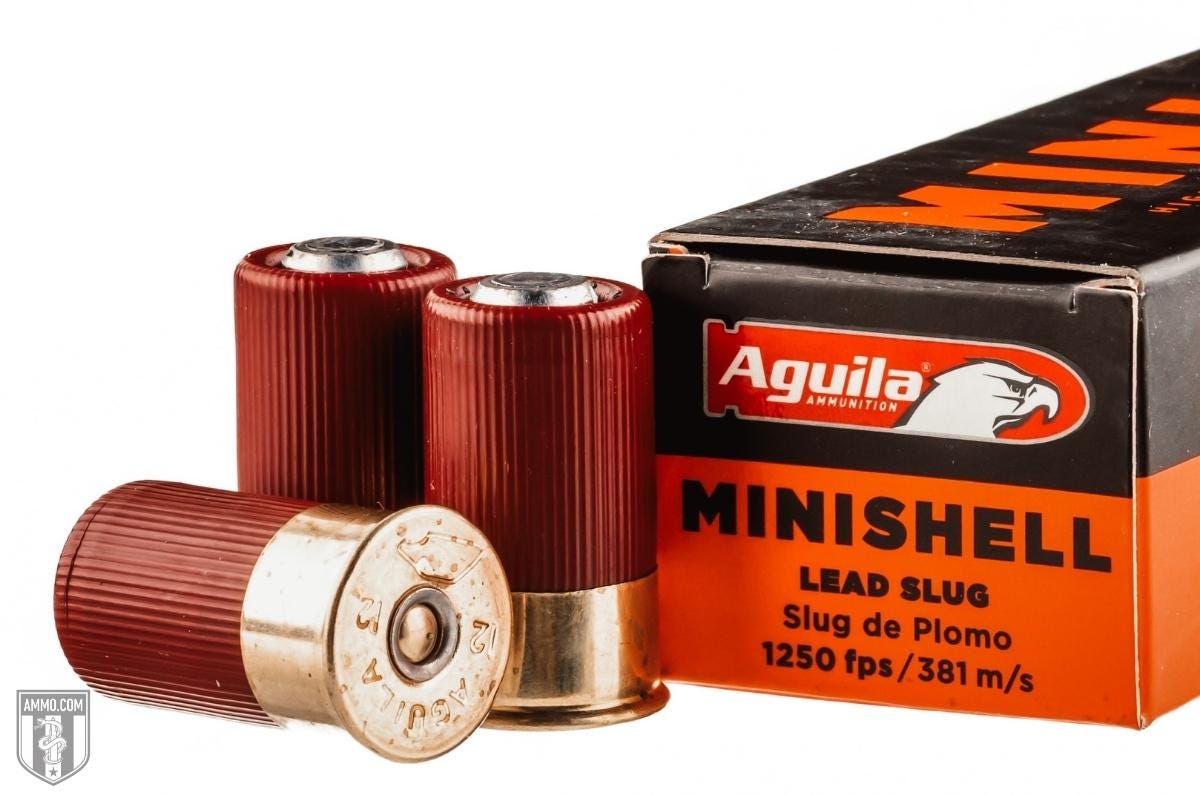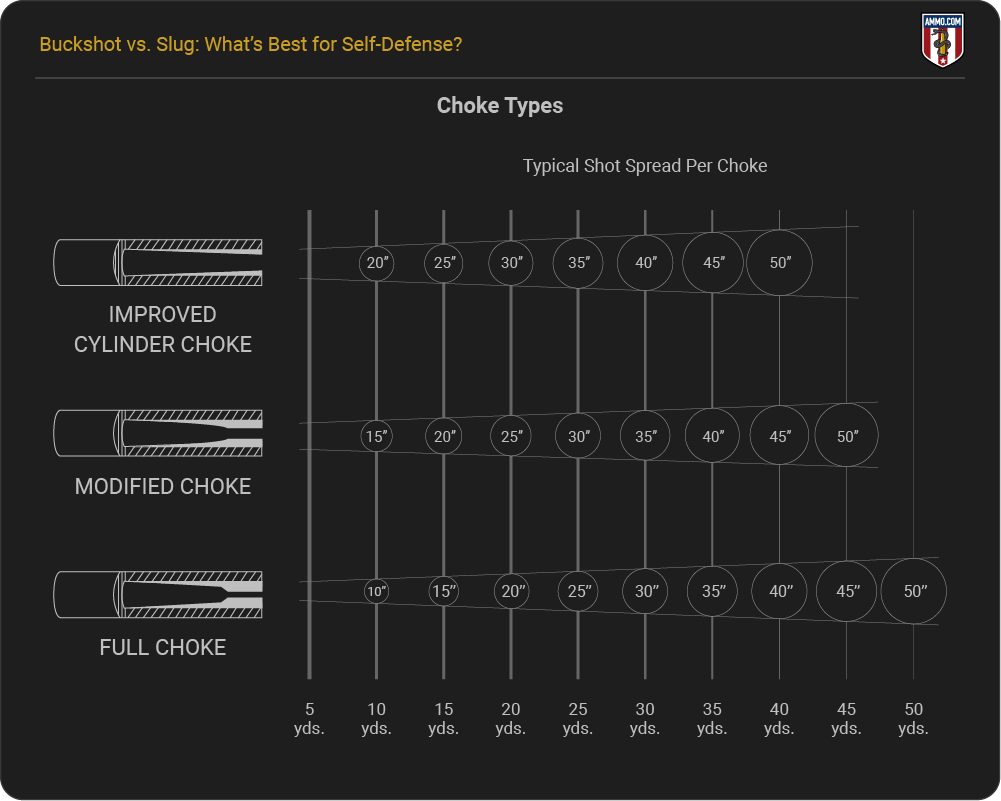Buckshot vs. Slug: What's the Difference Between These Shotgun Shells?
Written by Sam Jacobs Subject: Gun RightsThe 12 Gauge shotgun is considered by many to be one of the most versatile firearms, as it is suitable for hunting and defense alike. A 12 Gauge shotgun's stopping power is tremendous, offering homeowners, hunters, and law enforcement officers a potent solution for close- and long-range engagements.
Many newer shotgun owners wonder which type of ammo they need: buckshot, or slugs? A load of buckshot is devastating at close range, whereas a slug allows target engagement at longer ranges. Both types of shotgun ammo are effective for harvesting big game and self-defense, but electing the right ammo is critical to success. That's why this article lays out the relative pros and cons of buckshot vs. slugs. Read it and know which is better for your shooting needs!

The Difference Between Buckshot and a Slug Explained
The difference between buckshot and a shotgun slug is simple. Buckshot is multiple projectiles: lead balls typically ranging from 0.24 to 0.36 inches in diameter. Conversely, a slug is a single projectile: usually made of lead (sometimes copper or other metal), which performs similarly to a rifle bullet. Buckshot is effective at closer ranges (usually within 50 yards), whereas a standard rifled slug is effective out to 100 to 150 yards.

Understanding Buckshot
As its name implies, buckshot is intended for hunting medium and large game. In addition to bucks, it's commonly used for taking hogs and coyotes.
Buckshot pellets are larger than birdshot. The largest birdshot pellet is 0.22 inches in diameter. If it's any wider than that, it's buckshot. Buckshot loads usually contain more powder than upland hunting or target loads, which contributes to buckshot's longer effective range and higher damage potential.
When you pull the trigger on a Remington 870 12 Gauge shotgun, the pellets begin spreading out shortly after exiting the barrel. At close range, buckshot hits in a dense pattern to wreak maximum destruction. It's common for a 12 Gauge buckshot shell to hit with the power of a .308 Win hunting rifle cartridge, albeit spread out over eight or more points of impact.
The picture below will help you understand how shot size relates to the pellet diameter.

Understanding a Shotgun Slug

A slug is a single large projectile designed to be fired from a shotgun. There are two major types of shotgun slugs: rifled (designed to be fired through a smoothbore barrel), and sabot (designed to be fired through a rifled barrel).
The major advantage of using a slug over buckshot is that a slug extends the effective range of a shotgun significantly. Using only a bead sight, you can accurately fire a rifled slug out to 50 to 75 yards. With a scope, you can reach even farther.
A slug will not accurately cover the same kind of distances as most rifle bullets, although it can extend a shotgun's effective range approximately two to three times farther than buckshot.
A 1 ounce (i.e. 437.5 grain) 12 Gauge slug has a diameter of approximately 0.729". That's going to leave a big hole in whatever it hits! A slug will also penetrate deeper into its target than buckshot. It's heavier, and therefore conserves more momentum after impact.
Factors That Affect Pattern
The way a shotgun shell disperses its shot on a target is referred to as its "pattern" or "spread." The type of pattern a shell exhibits is typically tailored to its intended purpose.
Several factors influence a shell's pattern. Certain shotgun barrels are designed to constrict near the muzzle, thereby tightening the shot pattern as it exits the barrel. A choke, which is screwed into (or integral to) a shotgun's muzzle, controls the amount of constriction the shot is subjected to before exiting the barrel.
The three most common choke tubes are full, modified, and improved cylinder. Each has a different level of constriction. A full choke is the most aggressive, whereas an improved cylinder has the least constriction.

Rifled Slug vs Sabot Slug: Understanding Your Shotgun Barrel
There is always a lot of confusion surrounding the use of rifled slugs and sabot slugs, and which type of shotgun barrel you need for either. The simple answer is this: rifled slugs for smoothbore shotguns; sabot slugs for rifled bore shotguns.
Smoothbore is the classic shotgun barrel design, as it is simple to manufacture. These barrels have no rifling, and therefore cannot impart rotational stability to anything that passes through them. Rifled slugs (which only have "rifling" so they can safely pass through a choke tube) are designed for smoothbore barrels. A sabot slug will not damage a smoothbore barrel, although its accuracy out of one would be simply atrocious.
A sabot slug is essentially a large projectile resembling a rifle bullet that sits within a plastic cup (literally a "sabot"). The cup engages the lands and grooves in a rifled barrel, thereby imparting rotational stability to the slug (which helps it exhibit better accuracy over long distances). When the sabot exits the barrel, air resistance causes the cup to detach, and the projectile heads toward its target.
A sabot requires a rifled barrel to impart spin on the projectile. Without it, the projectile will soon begin tumbling in flight. Take care never to fire a rifled slug in a rifled barrel, as doing so could damage the rifling.
The bottom line is this: know which shotgun barrel you have, and buy the right ammo for it.
Effective Range of Buckshot & Slugs
Shotguns are considered close-range firearms. Buckshot is not intended for long-range shooting. Generally speaking, buckshot has an effective range of around 75 yards compared to up to 200 yards for slugs.
Buckshot pellets are fairly lightweight and not particularly aerodynamic. They quickly lose velocity and kinetic energy as they travel downrange.
Effective range is highly dependent upon the shot size you are firing. The very best 00 buck shell on the market won't give an experienced marksman an effective range much farther than 70 yards. On the other hand, a premium sabot slug can reach 200 yards.
Slugs usually have higher muzzle velocity than buckshot, which is yet another reason why they have so much more potential to inflict damage. Higher muzzle velocity means that a slug will reach its target faster, and give gravity less time to pull down its trajectory.
Both of those factors give shotgun slugs the edge in terms of effective range.

Visit our Remington 20 Gauge slugs page for more ammo choices!
Stopping Power/Penetration
The 12 Gauge shotgun is highly regarded by military, law enforcement, and civilian shooters for being a powerful firearm in close-range situations.
Buckshot is effective at closer distances, whereas slugs are more effective at longer ranges.
Read the full guide now → Buckshot vs. Slug: What's the Difference Between These Shotgun Shells?























